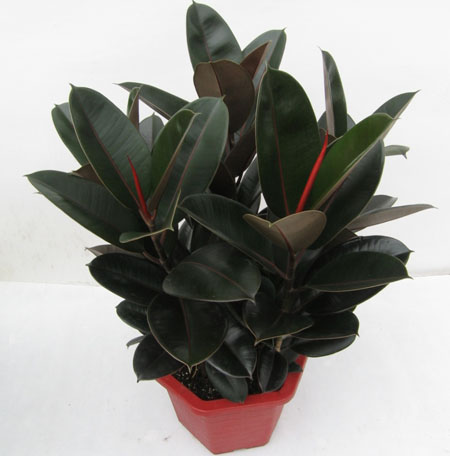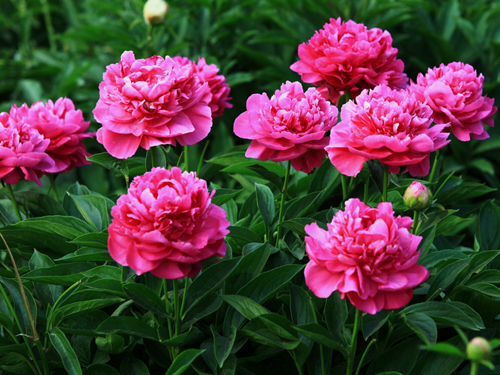What is thyme? the culture method of thyme
Thyme scientific name: thymus vulgaris alias: thyme, ground pepper, ground pepper, mountain pepper, family and genus: Labiatae, thyme.
Morphological characteristics: the plant is about 20 cm tall and the whole plant has aroma and mild spicy taste. The lower part of the stem is creeping and tufted, the upper part is erect, quadrangular, much branched. Leaves opposite, narrowly elliptic or lanceolate, ca. 0.7 cm long, ca. 0.3 cm wide, grayish green, margin revolute. Flowering in early summer, whitish with red, 0.2 cm in diameter, terminal verticillate inflorescences. Seeds small, orbicular, about 6000 seeds per gram.
Ecological habits: like plenty of light. The requirement of soil quality is not high, but it needs good drainage.
Cultivation and management: it can be propagated by sowing, cutting, striping and dividing. Because the seed is small, sowing is better, you can first fully wet the medium and spread the seed evenly on it. When growing 4-6 leaves, it can be moved to a smaller container (such as hole plate), and then moved to the basin when the root system of the plant is well developed. Cuttings can take terminal buds as cuttings, with 3-5 nodes as good, but be careful not to take the textured branches, their rooting energy is poor. If the potted plant uses peat soil as the cultivation material, about 20% river sand should be added to facilitate drainage. It is better to dry a little and then water it than to keep it wet. Due to the slow growth rate, do not need too much fertilizer, if peat as the medium, only need to add about 5%-10% mature organic fertilizer, after the plant grows up, once every 1-2 weeks watering liquid fertilizer, summer growth is weak, it is not suitable to apply fertilizer at this time.

Application: can be planted in courtyard. Fresh branches and leaves can be eaten directly, or spices can be used, and essence can also be extracted as bath products. It can improve the discomfort of nose and throat, help digestion, diuresis, expel Ascaris lumbricoides and so on.
Medicinal efficacy: dispelling wind and relieving surface, relieving pain and relieving pain, relieving cough and reducing blood pressure.
Culture methods and matters needing attention of thyme
In China, thyme is known as ground pepper, ground pepper, mountain pepper, mountain pepper, thyme and so on. Thyme is semi-irrigated, with fragrant stems and leaves. Often used as flower mirrors, flower beds, rock gardens, spice gardens or sunny ground cover plants. It is very suitable for edible seasoning and has high medical value.
The cultivation environment of thyme should have plenty of light, otherwise the plant will grow in vain. The requirement of soil quality is not high, but it needs good drainage. Peat moss or cultivated soil mixed with perlite can be used. The most suitable temperature for growth is 20 degrees Celsius to 25 degrees Celsius. Special attention should be paid to the high temperature in summer. When the temperature is high, the plants can be trimmed slightly to facilitate ventilation and be placed in a cool place for summer.
Organic fertilizer can be used as base fertilizer for fertilization. when the growth is exuberant in spring and autumn, Huabao is diluted 1000 times and irrigated once every 7-10 days. The plant is weak in summer, so it is best not to apply fertilizer. The branches and leaves can be cut and used at any time before flowering, otherwise the plant is easy to die after flowering and seeding. If it is harvested in large quantities, it can also be dried and preserved.
Thyme can be propagated by sowing, cutting, striping and splitting, and it is very suitable for reproduction except in summer. If you breed with seeds, because the seeds are very small, it is better to sow them, you can first fully wet the medium and spread the seeds evenly on top. When this leaf grows 4-6 leaves, it can be moved to a smaller container (such as hole planting plate), and then moved to a 3-inch basin when the root system of the plant is well developed. when planting, 5-10% organic patch can be added to the culture soil. Cuttings can take the terminal bud as cuttings, with 3-5 nodes is better, but be careful not to take the textured branches, the root energy is poor.
Culture method
1. The environment for breeding thyme.
Thyme, a plant that likes a warm environment, should be placed in a mild environment of 20 to 25 degrees. It cannot be raised in a hot and humid environment. Indoor ventilation should be increased in summer when the weather is hot, and water should be sprayed on the leaves of thyme in time to cool down. In addition, thyme needs plenty of sunshine in the production process, usually we should put it in the sunny balcony or sunny room, if the sun is not enough, it will make the plant grow in vain.
2. Fertilizer and water management of thyme
The fertilizer and water management of this plant is particularly important. The leaves of this plant are slightly fleshy, drought tolerance is relatively strong, waterlogging tolerance is particularly poor, usually water supply can not be too much, watering once a week can and can not make the pot soil too wet, or stagnant water appears in the flowerpot, otherwise its roots will rot. Thyme, this plant has relatively low requirements for fertilizer, it grows slowly, usually does not need regular fertilization, only needs to be fertilized every half a month when thyme grows vigorously in spring.
Matters needing attention
Usually raise thyme, we must pay attention to rest and recuperation, it is necessary to pick the heart during the seedling period, so as to promote branching and shaping, and usually prune it at any time according to its growth, so as to maintain the beauty of the plant. at the same time, it is also conducive to its ventilation and healthy growth. In addition, the plant of thyme should be changed every two years, and the soil should choose neutral or alkaline soil with good drainage.
- Prev

What are the key points for the conservation of rubber trees (Indian rubber trees)
Rubber tree (Indian rubber tree) scientific name: ficuselastica alias: Indian rubber tree, Indian banyan big leaf green, red Burmese tree, red mouth rubber tree, Indian banyan family: Moraceae, banyan origin distribution: Indonesia, India, Malaysia. Key points of conservation: evergreen Arbor
- Next

Culture method of Paeonia lactiflora (Radix Paeoniae Alba and Flos Lonicerae)
Peony (will, no bone flower) scientific name: paeonialactiflora alias: will leave, leave grass, greedy tail spring, Yu Rong, plough food, boneless flower, black draw Yi, red medicine and other families and genera: Ranunculaceae morphological characteristics: underground with thick roots, plant height 60 cm 120 cm. Ye Musheng
Related
- Fuxing push coffee new agricultural production and marketing class: lack of small-scale processing plants
- Jujube rice field leisure farm deep ploughing Yilan for five years to create a space for organic food and play
- Nongyu Farm-A trial of organic papaya for brave women with advanced technology
- Four points for attention in the prevention and control of diseases and insect pests of edible fungi
- How to add nutrient solution to Edible Fungi
- Is there any good way to control edible fungus mites?
- Open Inoculation Technology of Edible Fungi
- Is there any clever way to use fertilizer for edible fungus in winter?
- What agents are used to kill the pathogens of edible fungi in the mushroom shed?
- Rapid drying of Edible Fungi

